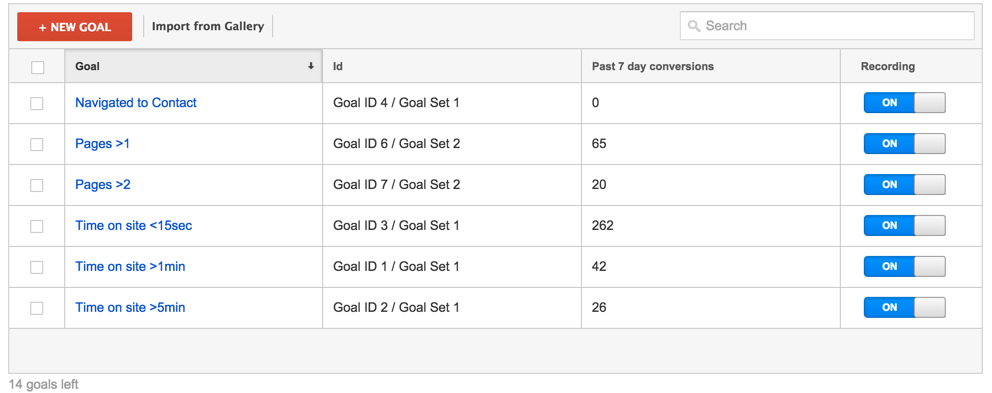Introducing the Blind Attractions: Understanding What Google Analytics Goals Can not Gauge
In the realm of electronic analytics, Google Analytics stands as an effective tool for monitoring and analyzing on-line customer communications. Recognizing what Google Analytics objectives can not gauge is critical for acquiring a detailed sight of customer behavior and engagement.
Customer Habits on External Platforms
Comprehending how customers interact on outside platforms is essential for enhancing on the internet methods. Exterior systems, such as social networks networks, recommendation sites, and online forums, play a substantial role in driving website traffic to a business's web site. By evaluating user actions on these platforms, organizations can gain useful understandings right into the performance of their advertising initiatives and the choices of their target market.
One key facet of customer habits on outside platforms is the referral resource. By tracking where the customers are coming from, businesses can recognize which platforms are driving one of the most traffic to their site. This details can aid companies designate their sources a lot more properly, focusing on the platforms that generate the very best results.
Offline Conversions and Interactions
Analyzing customer habits on exterior systems offers useful insights into on-line approaches; nonetheless, taking into consideration offline conversions and interactions is similarly important for a thorough understanding of a business's general performance. While Google Analytics stands out at tracking on-line communications, it drops short in catching the full consumer trip that usually consists of offline touchpoints. Offline conversions, such as in-store purchases or phone queries, play a considerable role in numerous businesses' success. Overlooking these communications can lead to an altered sight of the efficiency of advertising campaigns and overall company performance.

Acknowledgment Beyond Last Click
When delving right into the world of electronic advertising and marketing analytics, it becomes vital to look beyond the single touchpoint of the last click for an extra comprehensive understanding of acknowledgment. While Google Analytics provides beneficial understandings into individual behavior, depending solely on last-click attribution can be restricting - what data is google analytics goals unable to track. Attribution versions that exceed the last click supply a much more nuanced view of the client journey, thinking about all the touchpoints that lead to a conversion
Attribution beyond the last click enables marketers to appoint credit to numerous interactions along the conversion course, giving a clearer photo of the efficiency of various advertising networks. By discovering multi-touch attribution designs such as direct, time decay, or position-based acknowledgment, organizations can much better allocate their marketing spending plans and optimize their strategies for maximum impact.
Comprehending the impact of each touchpoint in the conversion process is important for making informed decisions and optimizing ROI. By click resources accepting attribution beyond the last click, services can acquire deeper insights into customer habits and customize their advertising initiatives a lot more effectively.
Cross-Device and Cross-Browser Monitoring

Similarly, cross-browser monitoring complements cross-device monitoring by recording user actions as they change in between various internet internet browsers. Comprehending just how customers connect with web sites on various web browsers can help marketing experts optimize their on the internet experiences to make sure consistency and functionality throughout various platforms.
Qualitative Information and Individual Intent
Understanding individual intent through qualitative information analysis is vital for creating targeted digital advertising strategies that reverberate with the demands and preferences of the target market. Qualitative data provides understandings right into the 'why' behind user actions, dropping light on inspirations, emotions, and choices that measurable data alone can not capture. By examining user comments, remarks, and communications, marketers can reveal informative post beneficial information concerning user intent, enabling them to tailor their messaging, web content, and offerings to better align with what their audience is seeking.
Qualitative data additionally assists in recognizing the context in which customers involve with a site or application. This contextual understanding enables online marketers to create more appropriate and customized experiences, eventually driving higher interaction and conversion rates. By delving into individual intent via qualitative information analysis, companies can get a much deeper understanding of their target market, bring about a lot more reliable advertising strategies that satisfy individuals' expectations and requirements.
Verdict
To conclude, Google Analytics goals have restrictions in determining individual behavior on external systems, offline conversions, attribution beyond last click, cross-browser and cross-device monitoring, and qualitative information connected to individual intent. what data is google analytics goals unable to track. It is essential for businesses to be knowledgeable about these blind spots in order to supplement their information evaluation with various other tools and methods to gain an extra extensive understanding of their audience and enhance their total electronic marketing strategies
By analyzing user habits on these platforms, organizations can acquire beneficial understandings into the effectiveness of their advertising and marketing efforts and the preferences of their target audience.
Examining individual habits on external platforms provides beneficial insights right into on the internet methods; nonetheless, thinking about offline conversions and communications is just as important for an extensive understanding of a firm's general efficiency.In digital marketing analytics, relocating beyond last-click attribution to explore cross-device and cross-browser monitoring is vital for obtaining an alternative understanding of individual interactions throughout numerous platforms and tools. By analyzing user comments, remarks, and communications, online marketers can discover important information concerning user intent, enabling them to tailor their messaging, web content, and offerings to much better align with what their audience is seeking.
By diving into customer intent through qualitative data analysis, companies can get a much deeper understanding of their target audience, leading to more reliable advertising and marketing techniques that fulfill customers' expectations and requirements.